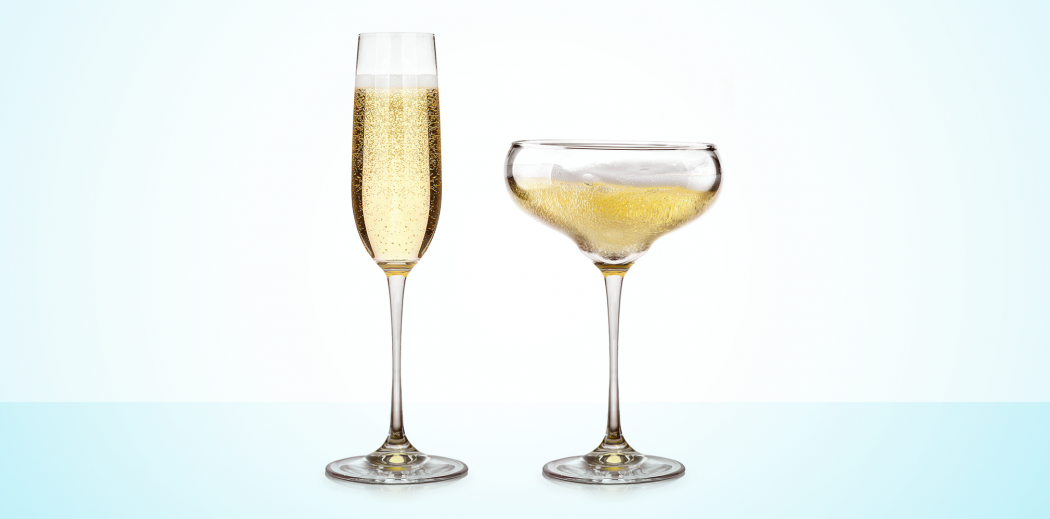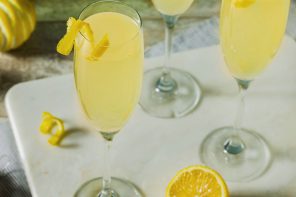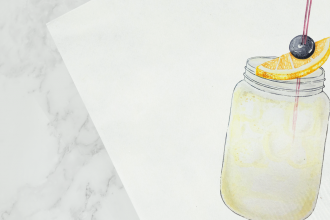The modern world knows that Champagne is meant to be drunk out of a flute. To watch those bubbles rise and pop at the surface of the cylindrical body, tempting you for your first sip of the effervescence. But before there was the flute, there was the coupe. Imagery draws archaic yet timely pictures of royalty and the lavish parties in The Great Gatsby where guests always had a glass half full. But as time moved on, we’re left wondering why coupes still don’t have a place at the party.
Myths do say the design of the coupe was replicated after a famous bosom (we’re talking about you Marie Antoinette) but this has been deemed false. Champagne was invented in the 17th century by a Benedictine Monk and its subsequent glass, the coupe, came to fruition in 1663 in England specifically for the bubbly, debunking any myths associating the glass to breasts of much later women.
Originally, during the time of Louis XV of France, the coupe was used to shoot Champagne like a shot rather than sip. Because our drinking of Champagne has clearly evolved to a slower pace, this can hint at why the anatomy of the glass did too. The shallow bowl that sits on the short stem allows for the quick gulp whereas the long flute shows off its bubbles.
The flute started to make its way into hands by the mid 1950s as the coupe exited the scene by the 1960s. Although the coupe has been around longer, many avid Champagne drinkers believe the poor design of the coupe leaves the flute here to stay. The coupe’s shallow glass means spillage is more likely and it also wasn’t designed with the bubbles in mind.
Rather, the flute has a nucleation point at the bottom of the glass where bubbles gather to rise to the top. The narrow surface space of the flute means less oxygen will reach the Champagne so the bubbles stay longer. Perhaps why people of the past shot the drink to maintain its carbonation.
Though we might miss our vintage coupes, only whipping them out for a themed party, the stemware has made a comeback to the craft cocktail scene. And, critics are bringing new details that might have us reconsider both the flute and the coupe when we pop a bottle. Critics say a white wine glass is ideal instead of the flute. The flute only fosters the bubbles in the drink, whereas a white wine glass allows the Champagne’s full character to develop. The wine glass has a tapered mouth to maintain carbonation, while the wide belly of the glass allows air to hit the wine pulling out its aroma to develop a fuller flavor of the wine.
No matter how popular either vessel may be or whichever you prefer, our Swag Shop has coupes for the vintage-inspired drinkers, the Chambong for party-goers and even unbreakable white wine glasses for a progressiver sipper who treats Champagne like the sparkling wine it is.









Seattle’s two most prominent Master Sommeliers suggest a burgundy glass for champagne since it still benefits from its surface area exposed to oxygen the way all wine does. So axtrpoating that idea, I beleive that the coupe glass is better for taste but the flute simply shows more bubbles.
Simple – use a special champagne glass with a “bowl” abd narrow rim to focus the aromas. If you can’t easily find one, use a white wine glass with a small “bowl” to truly appreciate the aromas and nuances of champagne. Neither a flute or coup allow this. 80% of taste involves smell. Cheers!